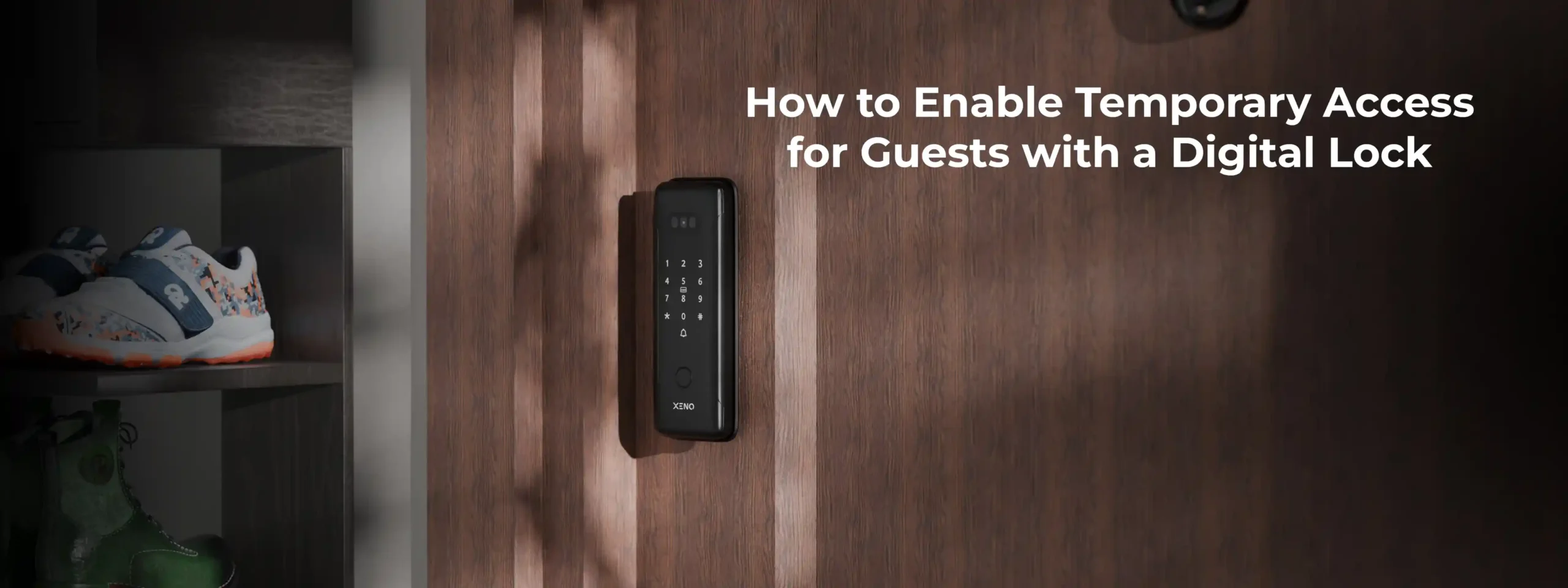
How to Enable Temporary Access for Guests with a Digital Lock
Digital door locks have transformed the way we secure and manage access to our homes. One of the most useful features of modern digital locks is the ability to grant temporary access to guests. Whether it’s a visiting friend, a relative, a cleaner, or a delivery person, you can provide secure, controlled entry without handing over a physical key.
In this guide, we’ll walk you through the different methods to enable temporary access using a digital door lock, what to look out for, and how to do it safely and effectively.
Why Temporary Access Matters
Life is busy, and it’s not always possible to be at home when someone needs access. Temporary digital access makes things easier and more secure than leaving a key under the mat or relying on neighbors.
Some common scenarios include:
- Relatives or friends visiting for a short stay
- Housekeeping or home services scheduled while you’re out
- Short-term rental guests
- Deliveries that require indoor drop-offs
Different Methods of Granting Temporary Access
Depending on your digital lock model, you’ll have a few options for enabling guest access:
1. One-Time Password (OTP)
This method generates a code that can be used only once. After it’s used, the code becomes invalid. It’s ideal for deliveries or one-off visitors.
How it works:
- You generate an OTP from your lock’s app or panel.
- Share the code with the guest.
- Once they enter the code, the lock opens — but it can’t be reused.
2. Timed Access Code
Some locks allow you to set a code that works only during a specific timeframe, such as between 2:00 PM and 4:00 PM on a given day.
Ideal for:
- Regular cleaning services
- Babysitters or caretakers
- AirBnB guests checking in at a specific time
Setup usually involves:
- Setting the code via the lock’s app or admin panel
- Defining the date and time range
- Sharing the code securely with your guest
3. Remote Unlock via App
If your digital lock is connected to Wi-Fi or Bluetooth and linked to a mobile app, you can unlock the door remotely. You’ll get notified when someone is at the door and can choose to grant access instantly.
Great for:
- Unexpected visitors
- Emergency situations
- Managing multiple guests in real-time
This method gives you maximum control, especially when combined with a video door viewer or smart camera.
4. RFID or Key Card with Time Restriction
Some digital locks support RFID tags or cards that can be programmed for temporary use. This is useful for short-stay rentals or commercial settings.
Tips for Using Temporary Access Safely
While digital locks make it easier to manage guest access, it’s important to use the features wisely:
Use Unique Codes
Avoid reusing codes. Always assign a unique code for each visitor, especially if access is granted repeatedly.
Track Access Logs
Most smart locks keep a log of who enters and when. This helps you monitor guest activity and ensure no one is accessing your home outside the permitted time.
Set Expiry Automatically
Ensure that temporary access codes are automatically disabled after use or after their time window closes. This prevents future unauthorized entry.
Don’t Share Codes Casually
Always share access codes through secure messaging or voice call. Avoid posting them online or sending via unsecured platforms.
Combine with Alerts or Notifications
Enable push notifications or SMS alerts so you’re informed when the guest uses their access. This gives you peace of mind and quick insight.
What to Look For in a Lock That Supports Temporary Access
If you’re considering getting a digital lock and temporary access is a priority, check for these features:
- Mobile app with guest access settings
- OTP (one-time password) or time-based PIN generation
- Remote unlock ability via Wi-Fi or Bluetooth
- Access logs and entry history
- Multiple user profiles or guest modes
These features ensure flexibility while maintaining a high level of security for your home.
